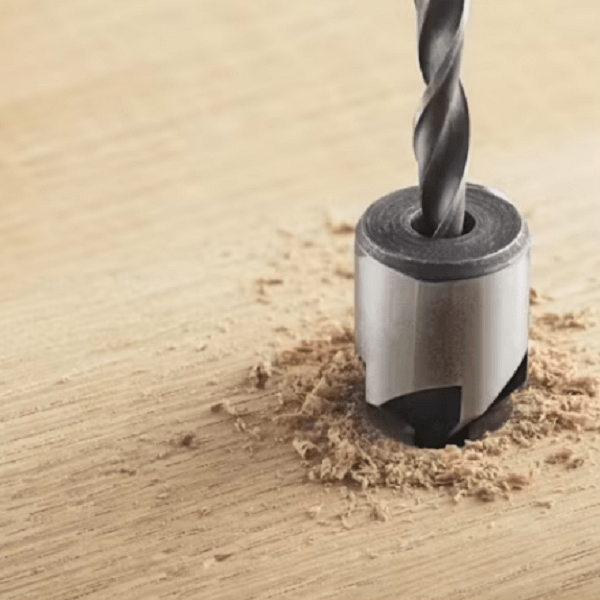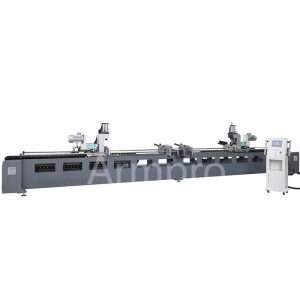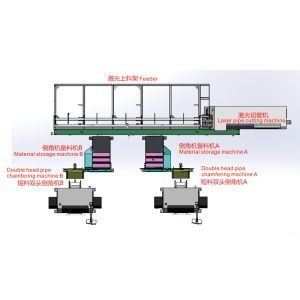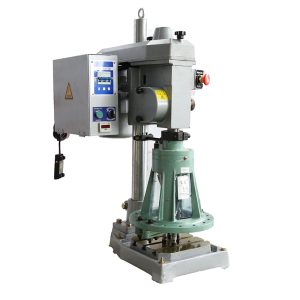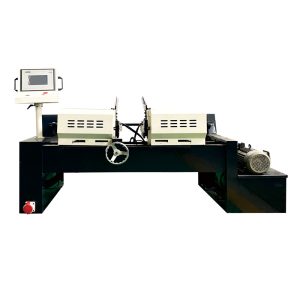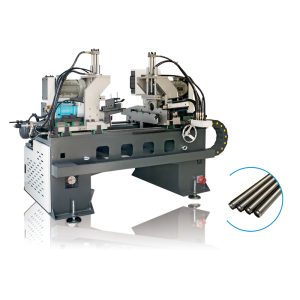Chamfer vs Countersink
Introduction
When it comes to manufacturing, machining, and design — the littlest details matter; precision is everything. Chamfer and Countersinking technique is one of the most popular techniques used to achieve smooth edges and correct alignment. While both approaches enhance quality, they work for different goals and involve different technologies. So, professionals and DIYers need to understand their differences.
Whether the material is metal, wood, or plastic, understanding when to use either a chamfer or countersink will benefit your results. In this article, we'll look at the differences between these techniques, applications, and the advantages of using them. By the end, you’ll know which method works for you. Let’s dive in.
1.What is Chamfer?
A chamfer is a slopped edge formed between two surfaces of an object, usually at a precise 45-degree angle. This process smooths out any sharp edges providing safety without compromising the aesthetic of the object. Chamfering is commonly used in machining, woodworking, and metalworking to create a smooth transition between two surfaces and improve the functionality of an object.
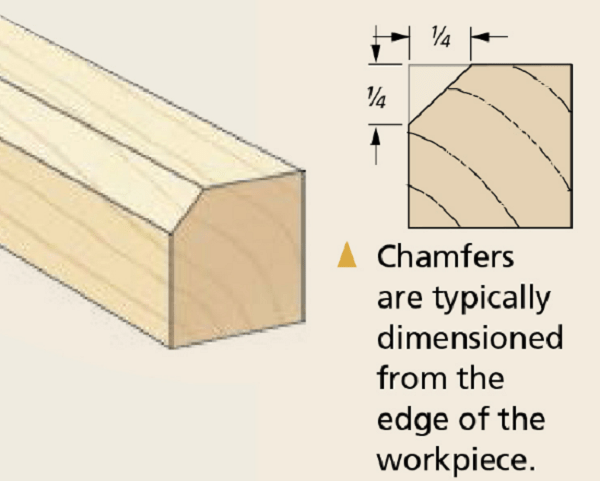
A chamfer symbol is used in technical drawings or blueprints and it specifies where and how a chamfer must be applied. This symbol typically states the angle and the size of the chamfer to assist machinists or craftsmen to accomplish the specified measurements. Chamfer size varies based on the material type and the application.
Chamfers enhance the structural strength of parts by diminishing strain points. Chamfers are an integral part of functional and visual enhancements in industries such as automotive, aerospace, and product design.
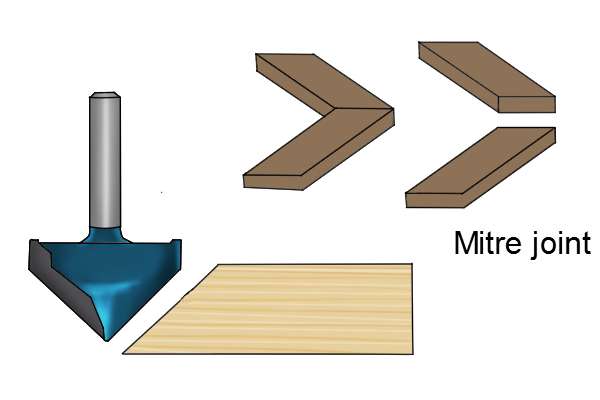
2.Chamfer Application
Chamfers have multiple use cases and are used across applications for industrial and visual requirements in manufacturing and design activities. Such as:
Chamfers in Machining
In machining, chamfers are important for edge preparations, clean cuts, and smooth transitions between surfaces. However, to guarantee measurement precision, a chamfer size chart is used to define the angle and its size. Correct chamfering maximizes overall quality of the component as well as the efficiency of the machining process.
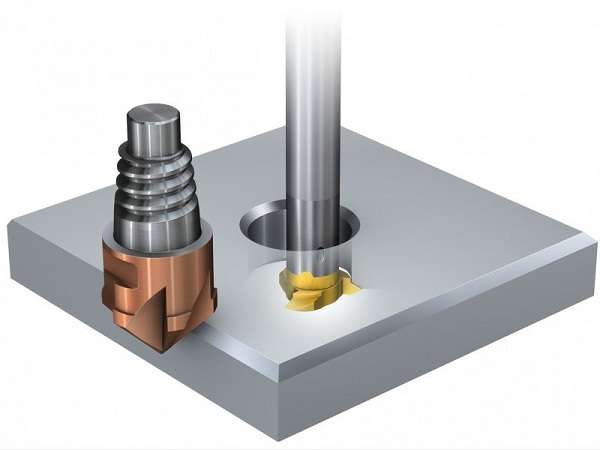
Chamfers in Assembly
Chamfers facilitate rowing and alignment of components during the assembly process and reduce misalignment and interference fitment. The correct use of a chamfer allows manufacturers to ensure that their components are seamless. This minimizes errors, hastens production, and ensures an accurate, fully working assembly process.
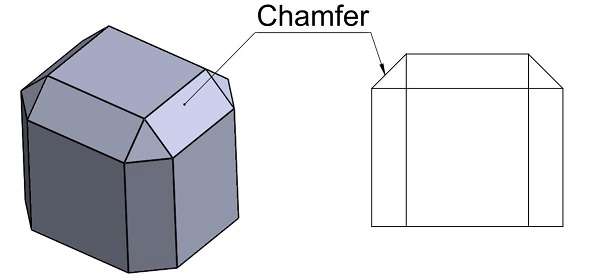
Chamfers for Safety
Chamfers are used as an edge treatment to eliminate any pointy edges, creating a safer product in tools, machines, and furniture. In short, the chamfer size chart ensures that the beveled edges are the proper sized so as to minimize the chance of injury.
Chamfers for Durability
Chamfers help minimize the stress concentrations within materials, thus avoiding cracks and improving durability. Engineers select the proper chamfer size to ensure the component does not fail when put under pressure. This becomes even more critical in high-performance domains such as aerospace or automotive applications.
Chamfers in Woodworking
In woodworking, chamfers serve two main purposes; they can provide decorative accents and help remove sharp edges for comfort and safety. Chamfered pieces can range from small decorative bevels to large functional edges. It gives you a refined and better finish.

Chamfers in Glass Cutting
Chamfers smooth the edges of cut glass, making it less likely to break. The correct chamfer size is applied to soften the glass edges and to prepare the glass with sharp corners for safer product handling.

Chamfers in CAD
Chamfers are an important feature in CAD, as they allow for the creation of beveled edges on the digital model. A chamfer size chart allows the designer to correctly choose the angle and dimensions, which helps to match the 3D design accurately. And chamfers help ensure that the design you have in mind conveys to manufacturers exactly as specified.
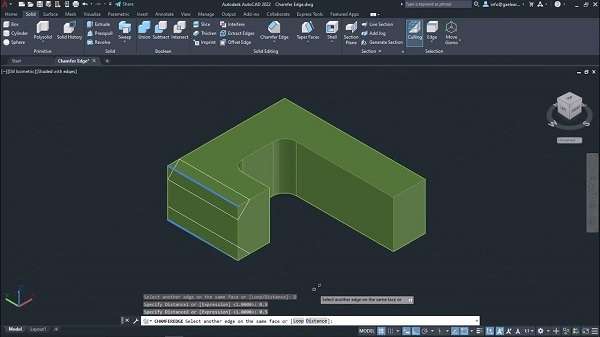
Chamfers in Automotive
In the automotive field, the use of chamfers is quite common to prevent wear and to ensure proper fitment. They also enhance aerodynamics. Controlling the size of the chamfer results in tightly fitting pieces that will increase the long-term effectiveness of the vehicle.
Chamfers in Aerospace
In aerospace, chamfers are used to minimize stress concentrations and enhance the structural integrity of components. Depending on the material and application, chamfer size is chosen to provide the amount of surface area to ensure critical aircraft components can withstand extreme forces.

Chamfers in Fuel Injection Technology
In fuel injection systems, chamfers are used to create precise nozzles that optimize fuel flow. The correct chamfer size also provides the proper angle to promote efficient combustion aiding in better fuel efficiency and engine performance.
3.What is Countersink?
Countersinking refers to making a conical recess in a material allowing the fasteners to sit flush or below the surface for a smooth, professional finish. Meanwhile, this process uses a drill bit to cut precise angled recesses. The countersink size and angle are determined by the design and application of the fastener.
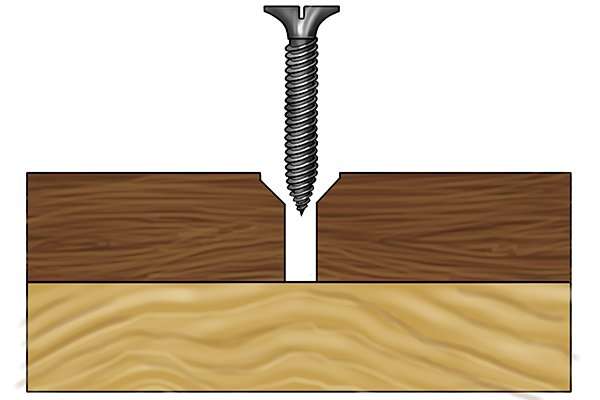
The countersink symbol is typically contained within an engineering drawing to clearly communicate the location and specification for countersink to the manufacturer. Typical angles for countersinks are 82°, 90° and 100°. Each angle is allocated for specific materials and applications, allowing fasteners to seat securely and flush.
Countersinking is used in wood, metal, and plastic, which helps to avoid bumps on the surface and creates a better appearance. And it minimizes interference with other equipment or structures. Countersinking in woodworking prevents splitting and covers fasteners. Metalworkers use it to create aerodynamic surfaces for aerospace and automotive manufacturing.
| Screw Size |
Appropriate C-Sink Cut |
Taper Drill | Straight Drill | Bung Diameter |
||
| Hardwood | Softwood | Hardwood | Softwood | |||
| #2 | 1/4" | 3/32" | 5/64" | 1/16" | 1/16" | 1/4" |
| #3 | 1/4" | 7/64" | 3/32" | 5/64" | 1/16" | 1/4" |
| #4 | 1/4" | 7/64" | 3/32" | 5/64" | 1/16" | 1/4" |
| #5 | 5/26" | 1/8" | 7/64" | 3/32" | 5/64" | 5/16" |
| #6 | 5/16" | 9/64" | 1/8" | 7/64" | 3/32" | 5/16" |
| #7 | 3/8" | 5/32" | 9/64" | 7/64" | 3/32" | 5/16" |
| #8 | 3/8" | 11/64" | 5/32" | 1/8" | 7/64" | 3/8" |
| #9 | 3/8" | 3/16" | 11/64" | 9/64" | 1/8" | 3/8" |
| #10 | 7/16" | 13/64" | 3/16" | 9/64" | 1/8" | 7/16" |
| #12 | 1/2" | 7/32" | 13/64" | 5/32" | 9/64" | 1/2" |
| #14 | 1/2" | 1/4" | 15/64" | 11/64" | 5/32" | 1/2" |
| #16 | 5/8" | 9/32" | 17/64" | 3/16" | 11/64" | 5/8" |
| #18 | 5/8" | 5/16" | 19/64" | 7/32" | 13/64" | 5/8" |
| #20 | 3/4" | 21/64" | 5/16" | 15/64" | 7/32" | 3/4" |
| #24 | 7/8" | 3/8" | 3/8" | 17/64" | 1/4" | 7/8" |
4.Countersink Applications
In fact, countersinking is so common across industries that minimizing protruding fasteners is essential for aesthetics, function, and safety. Some of the applications are:
Countersinking in Aerospace
Countersinks allow fasteners to lay flush, which is critical in aerospace applications for aerodynamic surfaces. This lowers drag and enhances efficiency. Countersink charts help engineers select exact angles and sizes in high-pressure environments.

Countersinking in Automotive
Countersinking is often used in automotive applications to avoid fasteners that could wear or vibrate out of place. A proper countersink will allow for easy assembly and longevity. Countersink charts standardize fastener recesses for manufacturers, increasing production efficiency.
Countersinking in Electronics
Countersinking in electronics allows the fasteners to be placed securely without damaging delicate components. The correct counter sink size stops destruction and helps smartphones assemble. Precision countersinking also helps functionality and decreases potential stress of surrounding material around fasteners.
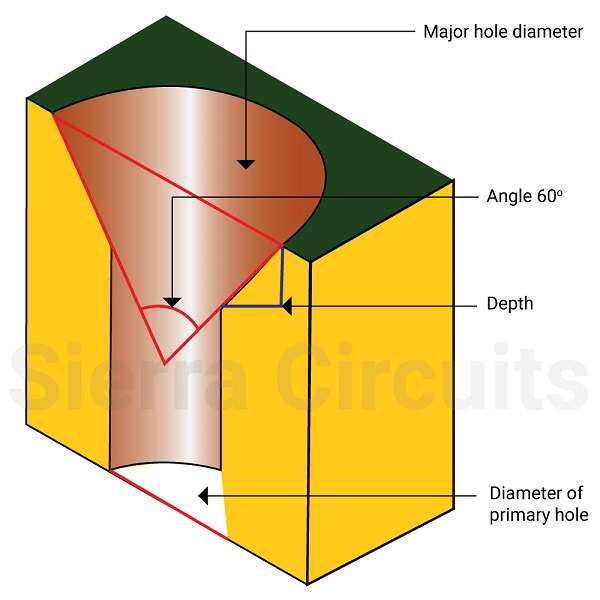
Countersinking in Furniture Making
Furniture manufacturers hide screws beneath decorative caps or fillers using countersinking, giving it a clean, polished look. The correct countersink size prevents wood from splitting, meaning that the finished furniture is stronger, safer, and more visually appealing.
Countersinking in Carpentry
Countersinking gives a smooth surface for carpentry projects by preventing heads from sticking out. Choosing countersink recess dimensions for specific screws is often based on reference to countersink charts in woodworking projects.
5.How to Choose Chamfer or Countersink for Your Application
The choice between chamfering and countersinking may vary depending on the project requirements, material type, and target use. Both techniques are appropriate for particular applications due to their advantages, meaning that the correct option is critical for successful outcomes.
Chamfer is ideal when you need to bevel an edge for easier transition, assembly, or look. The common application of this method includes machining, woodworking, and architecture. The chamfer size chart and the material or intended application should be considered to make the correct selection.
A countersinking is a better solution when you require to depress a hole to install fasteners or to improve the surface. This process is commonly used in aerospace, automotive, and electronics because these industries need to modify their products to become more functional. The countersink chart helps to determine the proper dimension for a hole, especially if you work with specific types of fasteners and materials.
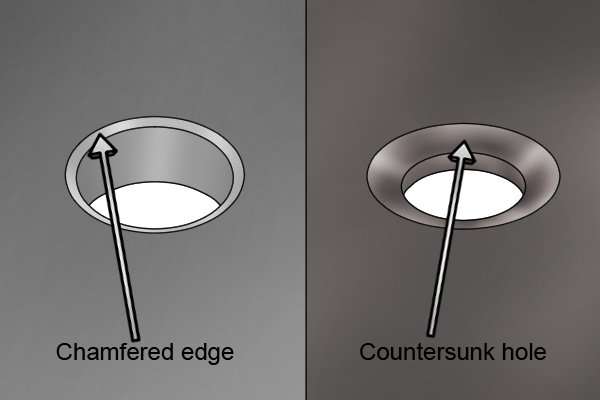
Therefore, the decision should be made according to the purpose of the feature, material properties, and industry standards. Proper planning and relevant tool utilization allow you to obtain a satisfying result.
Conclusion
Chamfering and countersinking are two essential methods for creating smooth, functional edges. Which one is best depends on your project’s material, purpose, and outcome.
If you’re aware of the difference between these processes, you can choose the proper one to ensure optimal performance and durability. Using the correct technique will enhance the combined aesthetic beauty and mechanical strength of your workpieces.
For detailed guidance and accurate pipe size tables, please visit Armpro Machine. Our range of accessories and expert advice ensures that you will find the perfect solution that meets your needs.
Don't forget to share this post!
Related Products
CONTACT US
Tell us your raw material and working details to get quotations within 24 hours.
WhatsApp Us: +86 159 27 555863

Want the best price & newest metal working machinery buying guide,tips and trends sent straightly to your box?Sign up for Armpro's monthly newsletter,we're free for your consultation and Offer you the most suitable working solutions!
The Buyer's Guide
- Tapping Machine: The Ultimate Buying Guide in 2024
- Electric Tapping Machines:the Ultimate Buying Guide in 2024
- Drilling Machine: The Ultimate Buying Guide in 2024
- Drilling milling Machine:The Ultimate Buying Guide in 2024
- CNC Tapping Machine :The Complete Buying Guide in 2024
- Pipe chafering Machine:The Complete Importing Guide in 2024
- Radial drilling Machine:The Complete Buying Guide in 2024
- Thread rolling Machine:The Complete Buying Guide In 2024
- Pillar Drilling Machine:The Ultimate Buying Guide in 2024

